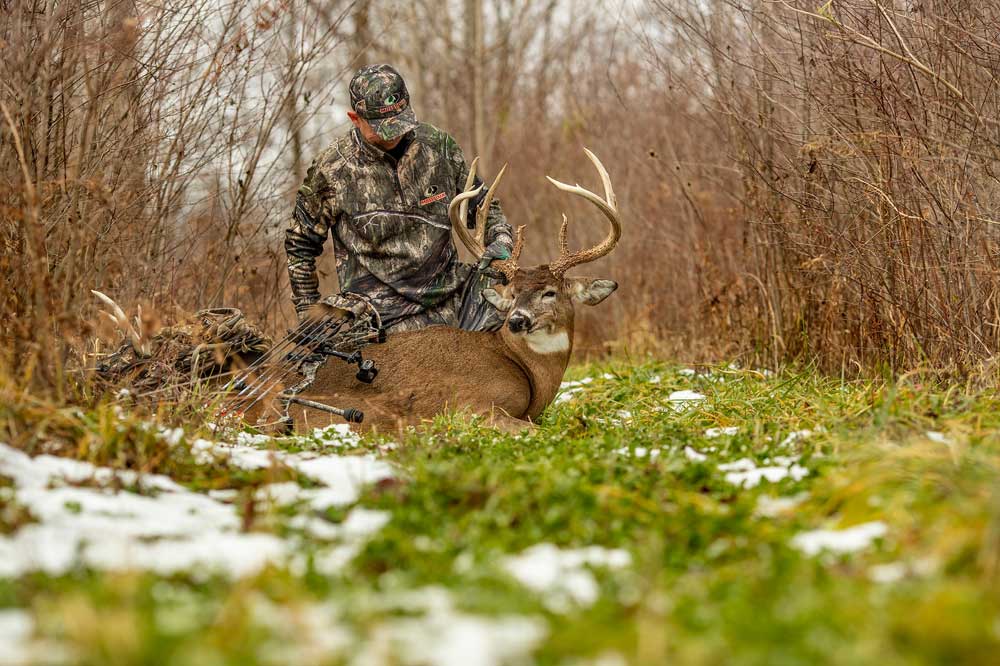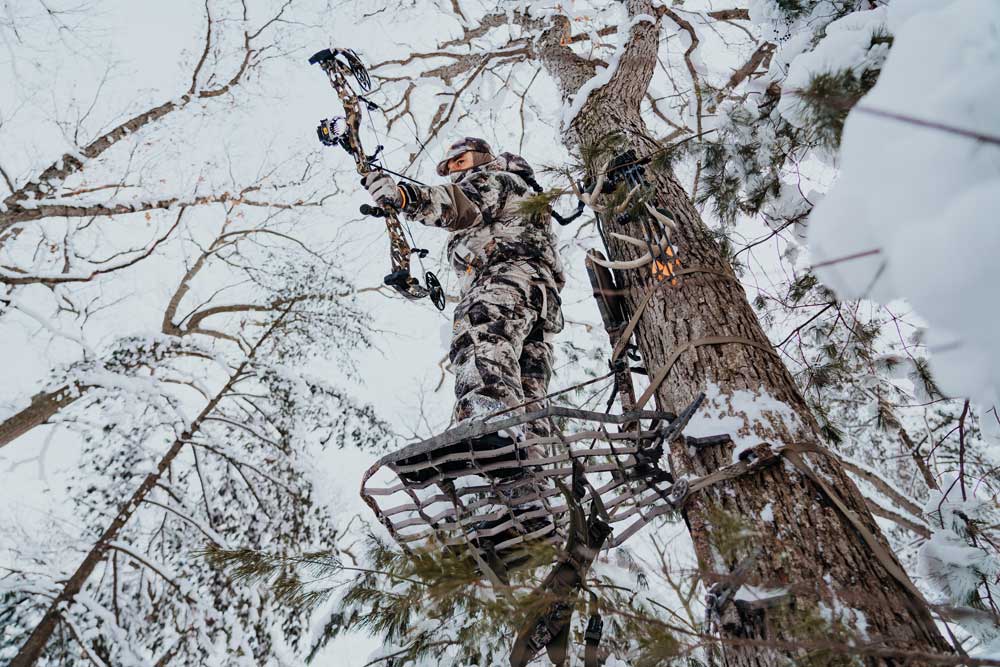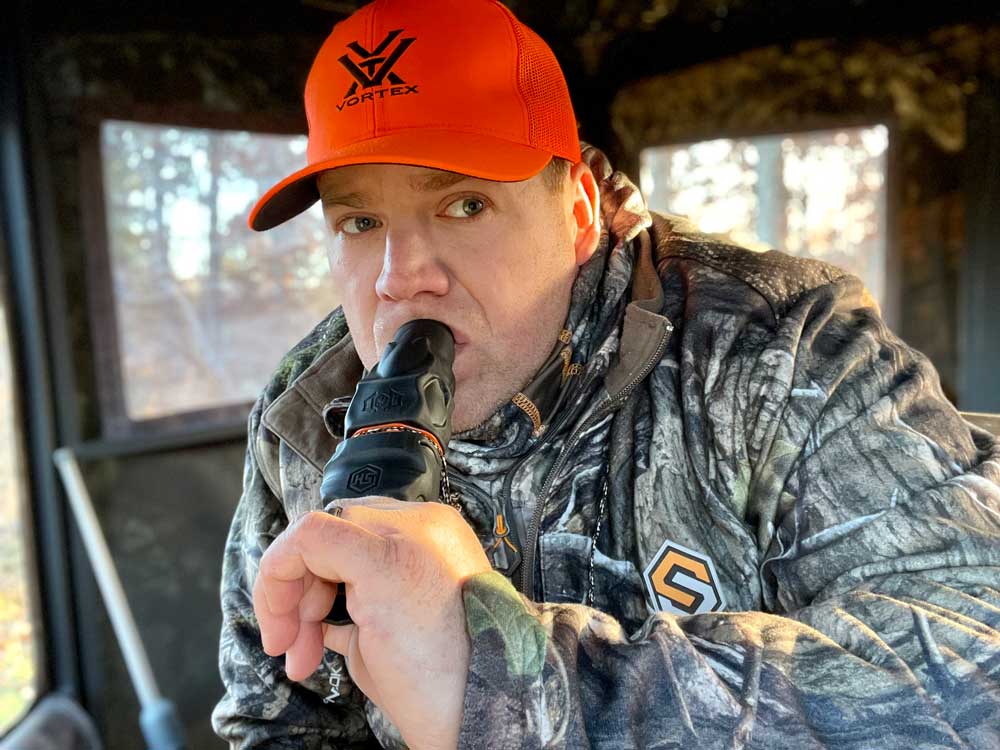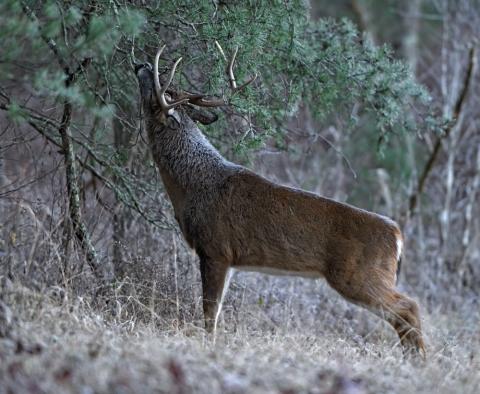Heath Wood

Hunting the December Rut
Most serious deer hunters begin their hunting season between early September and the first of October. Even earlier, around the first of June, it is easy to find hunters in preparation for the upcoming season. Typical prep work involves planting food plots, setting up trail cameras, hanging tree stands, and whatever else needs to be done before the season's opening day. The summer preparation is like an engine idling while warming up, and as the season begins, it is pedal to the floor throughout the fall.
Like that of deer themselves, once the end of November hits, hunters seem to crash from exhaustion. The bucks have been in rutting mode, and for the past several weeks, they have been chasing does. When in continuous seeking does mode, it is common for bucks to eat very little food, lose sleep, and burn an exhausting amount of energy each day while searching for more does to breed. After the primary rut is over, bucks will rest for several days, letting their bodies recover. The need for recovery can also happen to us as hunters when we have spent six months preparing and hunting. When the end of November arrives, we also need a break to help our bodies recover. No matter how serious of a hunter you may be, it is still easy to get somewhat burnt-out at one point or another. Like bucks recovering, the good thing is that it doesn't take long until our batteries become re-charged and we are ready to go again.
Often, the first to mid-December, white-tailed does, and bucks go into what many hunters refer to as the second rut. Some hunters do not like to use the term second rut to describe the re-occurring breeding activities that occur during this time because the rutting activity is far different from that of the primary rut. However, if one still has a buck tag in their pocket, the December rutting activity can be a great time to score a mature buck.
What is the Second Rut?
You may be curious as to what exactly the second rut is. The second rut is when fawns or does who did not get bred during the primary rut come into estrus. The fawns are a month older than when the primary rut occurred and often have the first estrus cycle between the beginning to mid-December. At the same time, does who did not get bred during their first estrus cycle in November go into estrus again 28 days later. In most of the country, the rut is in full swing during the second and third week of November. To explain in better, a doe who was in estrus the fifteenth of November that was not bred during that period would be scheduled to go into estrus again on the thirteenth of December.

The second rut is a great time to find mature bucks seeking to find any fawns or does who are looking to be bred; however, there are a few things a hunter needs to remember to be successful during the late season. The second rut takes place in mid-December, and in most parts of the country, it is cold. To sit in a stand or a blind for an extended period, one must dress appropriately to stand the cold. When hunting extreme cold during the late season, I wear a warm base layer such as the Climafleece Baseslayer from ScentLok. A base layer such as the Climafleece has a Microfleece interlining that provides warmth. As for my outer garments, I wear the ScentLok BE:1 Fortress Parka and Bibs featured in the Mossy Oak Terra Gilla pattern. The BE:1 Fortress suit is designed for bowhunters that strive to stay warm because of body-mapped Thinsulate insulation inside. The best feature is the ability to remain flexible enough to move when hunting.
During the late season, deer are often found near sources of food. Again, bucks need food to regain their strength and make up the bodyweight worn off during the primary rut. Deer, in general, require more food to stay warm during colder weather. When hunting food sources such as crop fields, a hunter will need to sit and be patient as deer feed. Thus, being the reason for dressing warm to sit for an extended period.

Another strategy hunters can benefit from for hunting the late December rut is the usage of deer calls to attract mature bucks. Remember, the only deer that bucks are seeking at this time are those who have not been bred yet. That means the competition will be high between bucks since the amount of does in heat during the primary rut is limited. A reduced amount of breeding opportunities means bucks will be eager to respond. Grunt calls work great during the second rut because more bucks seek the same doe.
Hunters can use a deer call such as the new Dominant Doe Bleat Deer Call from Hunters Specialties. Experts from the Drury Outdoors team back the Dominant Doe Deer Call because of the call's ability to simulate the sound of a mature doe who is eager for the company from a mature buck. I have recently been using the Dominant Doe Call, and I, too, have found that bucks respond great during the late season because of the realistic doe sounds produced.
After a slight pause to recover and regroup from the primary rut, mature bucks can be found near food to help recovery. The regained stamina comes just in time to seek the fawns and does who are coming into estrus again. Do not be afraid to get the deer calls back out and lure in a love-sick mature buck who is looking for that last doe to breed of the year.




























